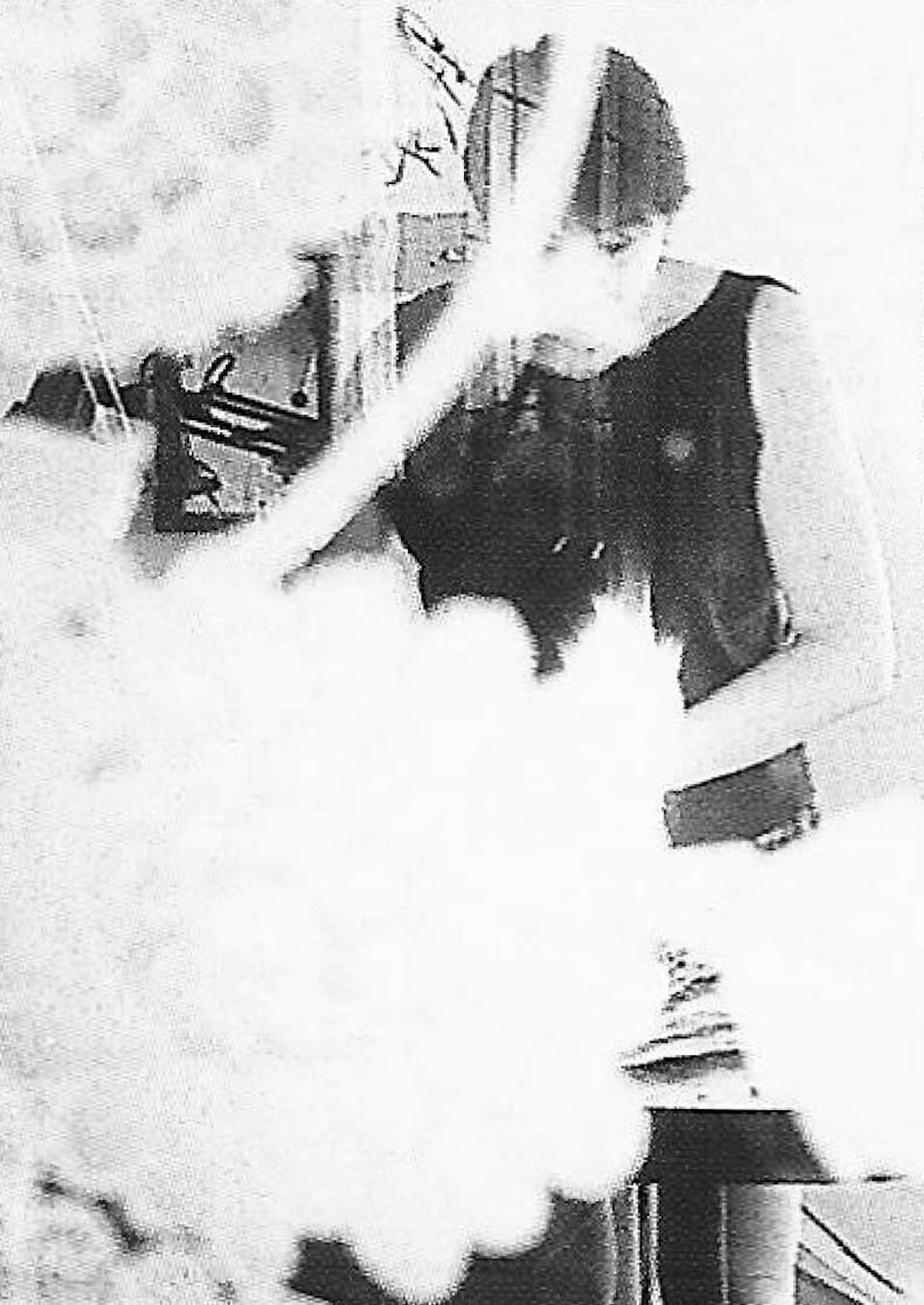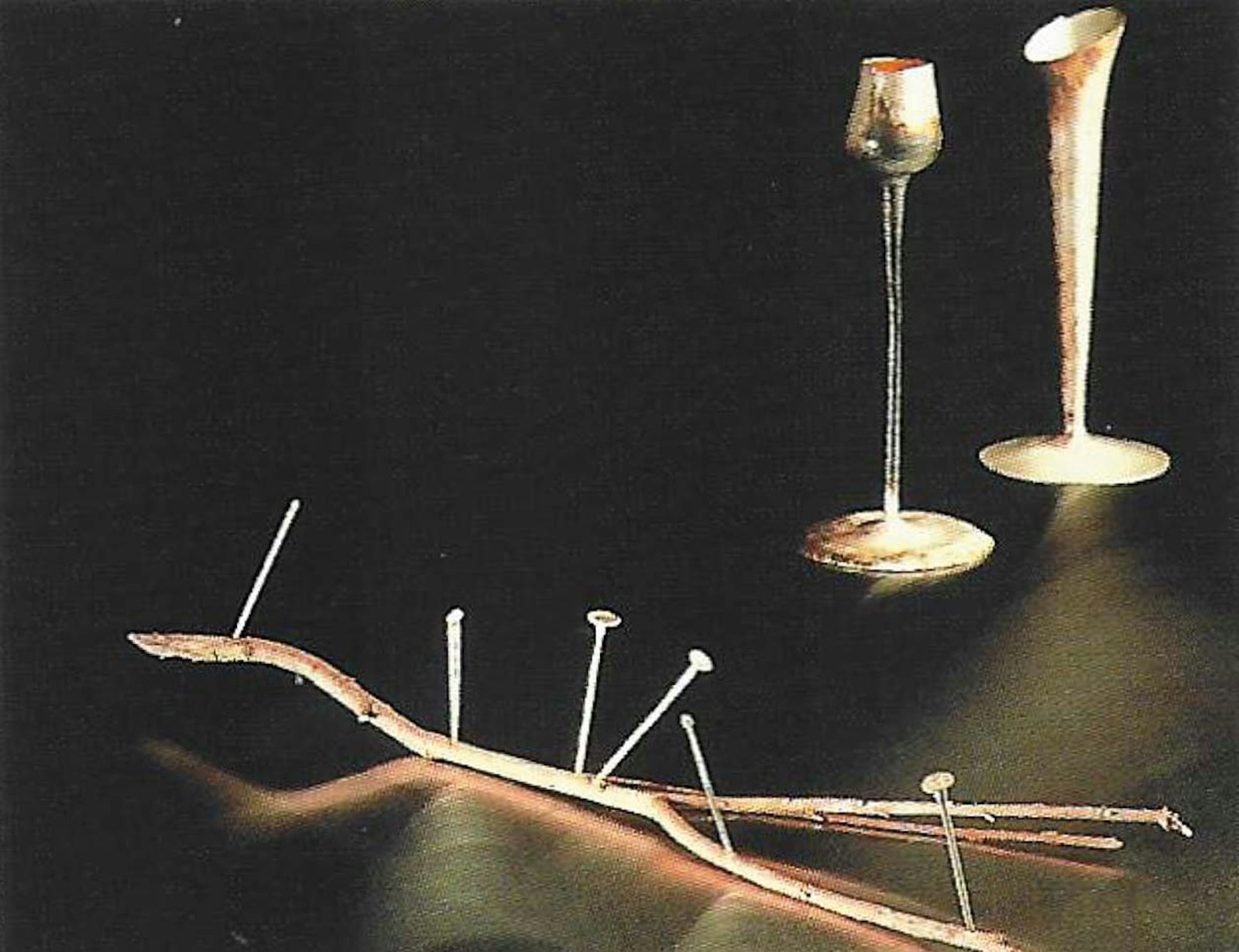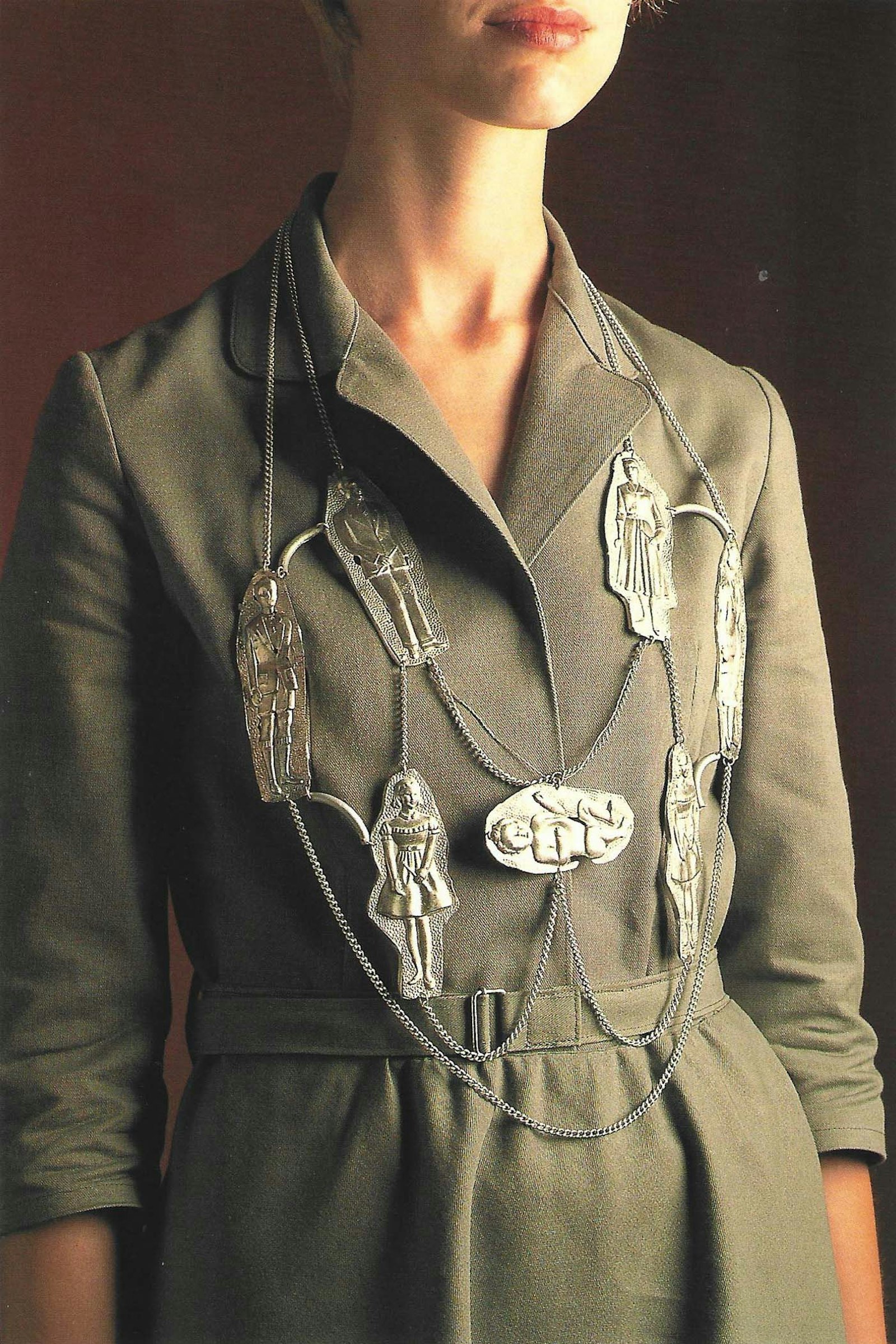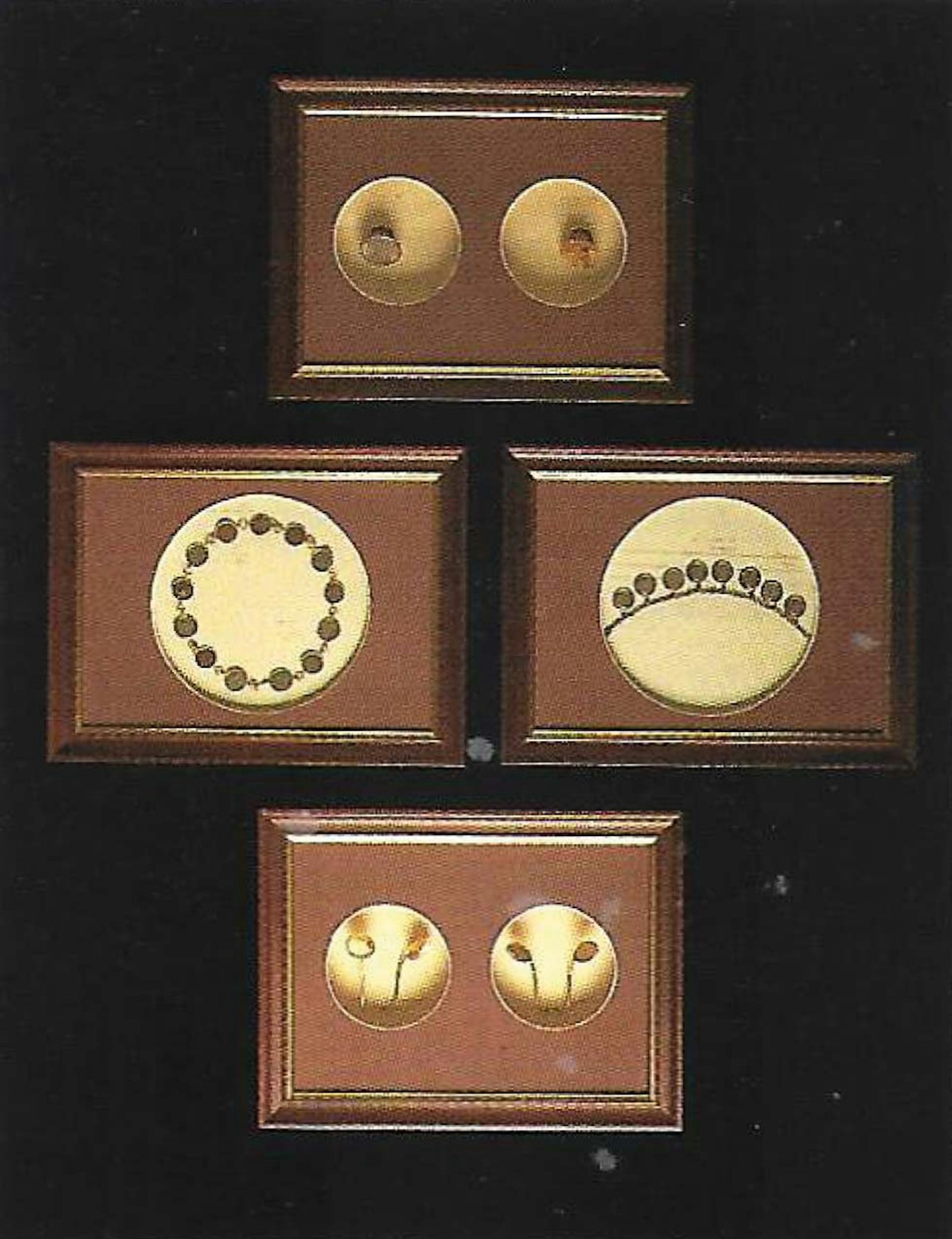de Velde
Hilde De Decker
Hilde De Decker first took a course in interior design at the Sint-Lucas lnstitute in Antwerp before studying jewellery design.
In itself, that does not make her a jewellery designer, although she does make use of the jewellery circuit to show her work to the public. But by saying that, we would seem to be giving in to the contemporary urge to fit everything neatly into a separate category.
Being categorised is the last thing Hilde wants.
Her jewellery is not exactly wearable, not only because of its shapes, but first and foremost because of its provocative nature. Her catalogue Eva's Kussen (which can be translated as either 'Eva's Kisses' or 'Eva's Cushion'), published in 1996, was certainly intended as a provocation, with shocking titles as Schaamlip, druppels witverlies en okselzweet (Labium, drops of vaginal discharge and arm pit sweat) and De Madonna van de Belgische Sierverraadkunst (roughly, The Madonna of the Belgian Art of Perfidious Ornament). Eroticism, femininity, and sexual violence are her themes, which are symbolised in necklaces such as Soi belle et tais toi, gold cages, Lichtekooi.
She has always been one to go against the current. When VIZO conceived the exhibition A Sparkling Party for Antwerp, Cultural Capital of Europe 1993, Hilde sent in a number of oxidised toothpicks, of which two had been enlarged into goblets. They contrasted sharply with the ether works. But they made an impact: Alberto Alessi and Alessandro Mendini gave her the Alessi Award that was conferred on that occasion. With this statement, they wished to express their appreciation for her anti-design.
When we asked her to design a set of wearable jewellery for the exhibition Parure Vandaag. Sier of Object?, she did in fact Present necklaces, bracelets, rings, and ear jewels. But she explicitly forbade us to take them out of their frames, and we were certainly not to photograph them on a model. In their frames, the jewels made of old coins refer to authority and hierarchy, to wealth, to "kings" and "rulers", while their servants wear the "collier de chien".
Gradually, her works evolved from series on a theme to full-blown installations. At first, these installations were still small, like Huisvlijt ("Home Crafts"), a collection of kitchen objects executed as jewellery and presented in a display case. Over time, these installations grew larger, extending to whole interiors. In Marzee, she set a table with all kinds of objects against a background of worn-out Gobelin tapestries, which resulted in an almost Baroque still life. Only, the table was not set with real silverware, but with fake silver and platinum lustre, riches for the poor, Luster voor het Oog ("Lustre for the Eye").
At the exhibition Blikvangers ("Eye Catchers"), organised by the Dutch Textile Museum in Tilburg, she presented her Nieuw Samengestelde Gezinnen ("Newly Composed Families"), live models in grey school uniforms, decked with small metal plaquettes chased with small figures; a performance.
But that does not mean that Hilde has stopped being a jewellery designer or a silversmith. When Andrea Branzi had made a few designs for Gallery Argentaurum, Eddy François asked her to execute them. These small silver jugs and baskets, usually combined with a bit of tree-trunk, thus combined Flemish craftswomanship with ltalian design.
As a member of the non-profit association Witverlies, she organises all kinds of art projects together with likeminded artists and designers. She also writes reviews on applied art for De Morgen, Kwintessens, and other magazines. And, just as she does in her work, Hilde always speaks her mind.




